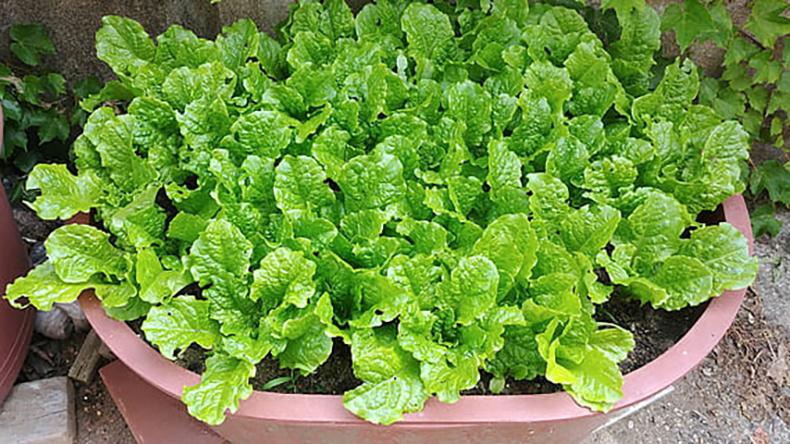Container edibles: growing a salad garden in a pot
-
 Photo: Wikimedia Commons
Photo: Wikimedia CommonsVegetable gardening is in vogue – again. For many years our agrarian lifestyle made home gardens a natural extension of what was going on in the community. But then our society changed. Somewhere along the line having a "potager," or kitchen garden, lost its appeal and usefulness. Cement patios, barbecues and perfect green lawns became a sign of wealth and prosperity. Supermarkets provided a wealth of fruit and vegetable choices throughout the year. We became separated from our food origins and disconnected from nature's cycles.
But times have changed and, fortunately, there’s been a movement that encourages us to go back to the land and grow our own food. This is a fun, healthy, and satisfying endeavor – even with kids or grandkids! One of the easiest ways to get started is growing a salad garden in a container. Here’s how.
Choose a sunny location that gets four to five hours of direct sunlight a day.
Select a large container that fits in with your landscape. If it doesn’t have drainage holes, you will need to drill some. Cover large drain holes with a piece of screening before adding soil.
Put the container on a plant stand with wheels if possible. That way if wind, sun, or marauding wildlife become an issue, you can move it. This will also keep the pot off the ground, allowing for free drainage – a critical component. It will also protect your deck from rotting.
Fill the container with an organic potting soil mix purchased from a nursery. The soil will be light and fluffy and allow for good drainage.
Think about your water source. If possible, save water by using drip irrigation or a soaker hose. If you hand water, try to do so in the early morning. Plants grown in containers need regular water; be sure you have a plan for keeping your salad garden hydrated.
Buy six packs of plant starts or single 2-inch pots. Try to buy packs of a variety of lettuces (such as green leaf, oak leaf and butter), so that you get to sample not only how each one tastes but also how large and fast each type grows. Experiment with lesser-known greens such as arugula, mizuna or sorrel. Plant a few herbs; they are easy to grow and will amp up your cuisine.
Plant your garden by digging holes the depth of the six-pack container. Carefully remove the plants by turning the plastic container on its side and pinching or lightly tapping the bottom until the plants fall gently into your hand. Gently loosen the soil around the root ball and place the plant in the hole. Cover with dirt even with the top of the root ball. Water gently to saturate the soil.
Make a salad! You can make a loose leaf lettuce plant last for many salads if you carefully pick the outside leaves and allow the inner leaves to continue to grow and develop. Snip your lettuce when you want to eat it, but be aware that it’s better to harvest lettuce in the morning before it gets too hot -- otherwise you may be disappointed with wilted lettuce.
Become a keen observer your garden. Pay close attention to what grows well and what doesn't. This will lead you to seek out new information, inspire you to plant new varieties of plants, and expand your garden in a thoughtful and ultimately successful way.
Experiment, have fun, enjoy and share your knowledge with friends and family!

